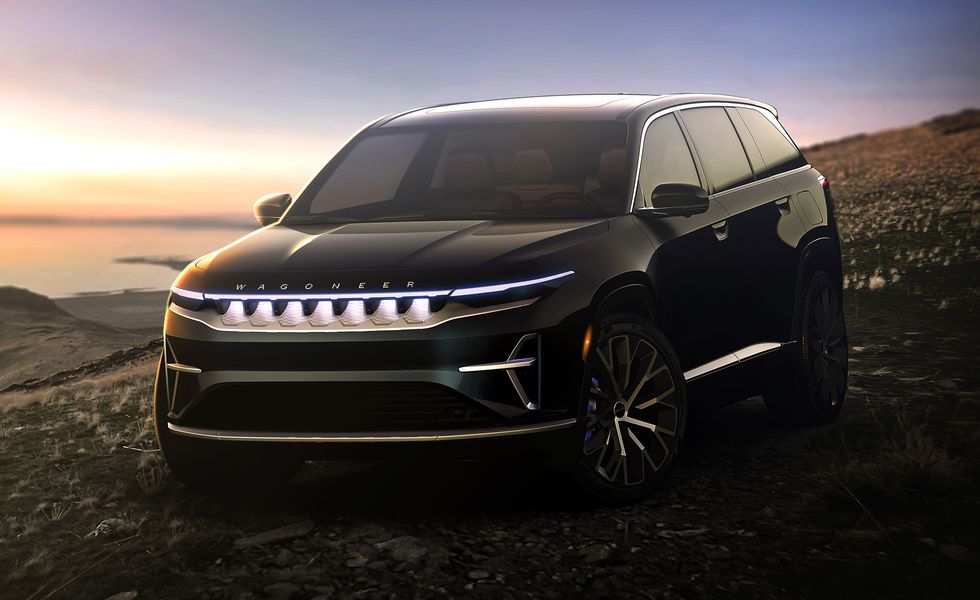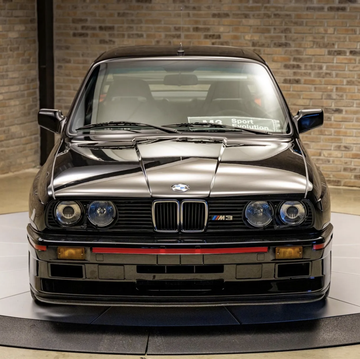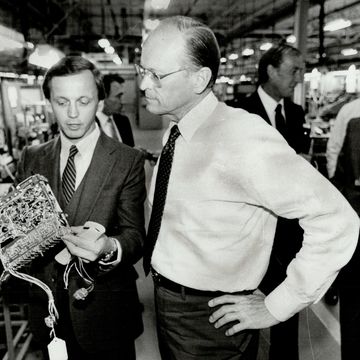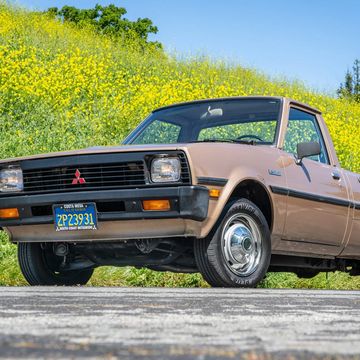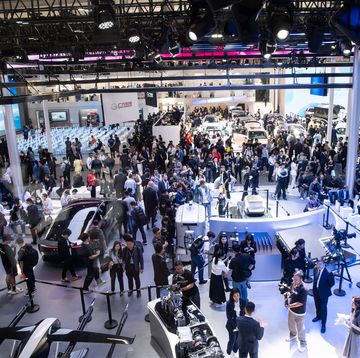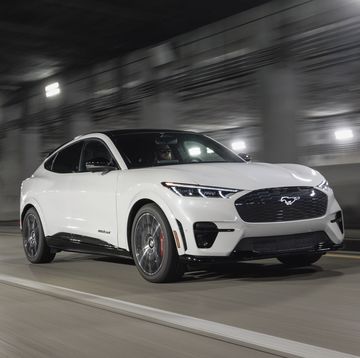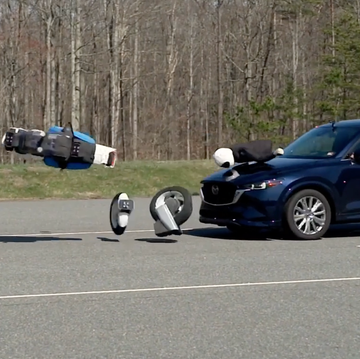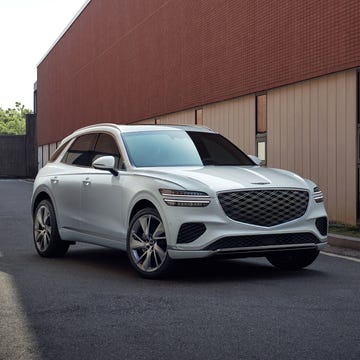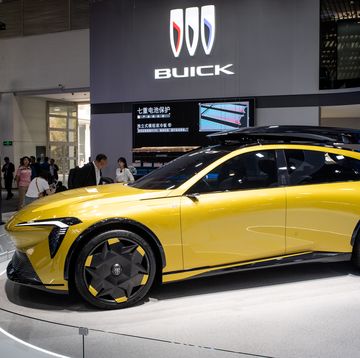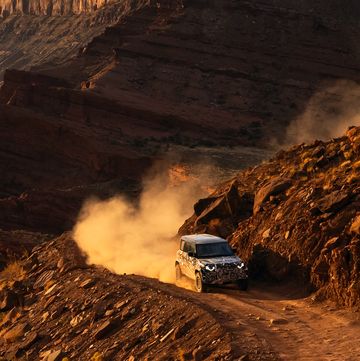- Stellantis, with several upcoming EVs in the works, is facing the issue of how to make them cost-competitive.
- Stellantis CEO Carlos Tavares says the company needs to make its own batteries and figure out how to make them cheaper and lighter.
- Among upcoming Stellantis EVs are the Chrysler Halcyon sedan and the Jeep Wagoneer S luxury electric SUV (above).
Any major car company makes its own engines, or at least the vast majority. They may buy in transmissions, but engines? The souls of new vehicles? They have to come from the maker itself.
But electric vehicles are different. The most expensive single parts of an EV are the lithium-ion cells inside its battery pack. And historically, those do not come from the carmaker whose vehicles they power. They come from entirely separate companies out of the world of consumer electronics, such as Panasonic, LG, Samsung, and BYD.
To date, only BYD and Tesla—the world's two largest EV makers—build their own cells. Only BYD sells them to other makers as well. As well as its ongoing partnership with Panasonic, which fabricates cells at Tesla's Nevada Gigafactory, Tesla is now grappling with the challenges of getting its new, larger 4680-cell format into volume production at its plant in Austin, Texas. That cell was entirely designed by the EV maker, unlike its previous collaborations with Panasonic.
General Motors co-owns Ultium Cells, which will have at least three North American factories to make cells for the Cadillac Lyriq, the Chevrolet Silverado EV, and other Ultium EVs. But GM's partner is Korean cell maker LG, whose cells powered its previous Bolt EV.
Energy Density, Weight, Cost
In a roundtable interview last week, Stellantis CEO Carlos Tavares told Car and Driver and other media outlets that he feels his company too must make its own batteries. The reasons are simple: cost-competitiveness and making EVs affordable to mass-market buyers. Those aren’t just buyers in the richest markets—Europe and North America—but also in less developed areas where Stellantis has substantial Fiat sales.
Tavares took on more than a dozen topics in 90 minutes, from Jeep prices (coming down) to the company’s withdrawal from several major auto shows (Stellantis has more effective ways to spend its precious marketing dollars, he said).
We asked Tavares outright, "At what point do surviving carmakers have to become battery developers, as opposed to buying cells from third parties [that do] the chemistry, the research, and so forth?"
His blunt answer: "I think we should be doing that for a very simple reason: the EVs we are making right now, they need to solve a very major issue, which is that you cannot add 1000 pounds of additional weight to every car.
"The big challenge of the next generation of EVs, from my perspective, is to make them lighter—with the same amount of energy . . . to protect the range." To allow an EV to be used as a North American household's main, or single, vehicle, he said, "500 miles should be okay."
To do that, Tavares said, you need to keep the same amount of energy, but radically reduce the cost—which requires doubling the energy density of the cells, or close. If you do that, Tavares said, "You are going to reduce the amount of cells you need. You are going to reduce the cost, you're going to reduce the weight. You'll move from 1000 pounds to perhaps 400 or 500 pounds. So you get the affordability, you get a much lighter car."
That reduces your needs for raw material—battery metals and minerals—but that's not enough, he continued. As costs come down, EV demand will continue to grow, putting more pressure on supplies of battery materials and inflating their price. “You need to shift your battery chemistry from scarce raw materials to abundant raw materials, so you don't trigger inflation and volatility” in a world where China presently has a controlling share of several of these materials.
Asked whether that meant lithium-iron-phosphate (LFP) cells, Tavares shrugged: Perhaps it's that, "or it could be something else: some [chemistry], eventually, that I don't know today. But what is clear is that we are in the infancy of this technology."
Three Startups and a Cell Collaboration
Stellantis long downplayed EVs, with its late CEO Sergio Marchionne famously telling shoppers not to buy the Fiat 500e electric compliance car it sold in California because the company lost $14,000 on each one.
But now that the EV transition has been firmly established, how can Stellantis—all but starting from scratch—compete with a cell supplier base that has been there for 15 years or more, with all the experience it has gathered?
"I can tell you what we are doing," Tavares said. "I'm not sure it's going to be enough, but we have our own battery company, called ACC, in which we are the leading shareholder (at 45 percent) along with Mercedes-Benz and Total Energy." That company has raised almost $5 billion to build four battery gigafactories in Europe.
Stellantis is also spreading its bets on research into more futuristic battery chemistries. It has invested in three separate startups working on three different chemistries. In January 2022, it invested in Factorial, which is working on solid-state cells. In May 2023, it did the same with Lyten, which is doing the same on the lithium-sulfur battery shown in the recent Chrysler Halcyon Concept electric sedan revealed earlier this month. And in January, it added a third company: a sodium-ion battery startup called Tiamat, whose cells use no lithium at all.
Meanwhile, though Tavares didn't address it, Stellantis is already in construction on two joint-venture EV battery plants in Kokomo, Indiana. Its partner there is Korea's Samsung SDI. Those plants will provide cells for several of the battery-electric vehicles the company will launch over the next two years, including the Jeep Wagoneer S luxury SUV and the Jeep Recon off-roading electric SUV.
Since it just cut Jeep prices, the U.S. arm of Stellantis is acutely aware of the need for lower-cost EVs as well as its upcoming higher-end electric SUVs. Tavares suggested the company’s investment in Chinese maker Leapmotor made it possible to build that company’s electric vehicles in any Stellantis plant in the U.S.
Any such move would tick one box required to earn federal EV purchase incentives: North American assembly. The other box—battery metals, materials, and processing from a list of non-hostile countries, and battery assembly in the U.S.—is also clearly on the CEO’s mind.
We may learn more about lower-cost EVs from the many Stellantis brands (Jeep, Dodge, Chrysler, Ram) after this year’s launches. Meanwhile, Tavares is far from the only carmaker CEO to be facing the need to control his own battery destiny for the EVs of the future—and how they can compete with Chinese entries.
John Voelcker edited Green Car Reports for nine years, publishing more than 12,000 articles on hybrids, electric cars, and other low- and zero-emission vehicles and the energy ecosystem around them. He now covers advanced auto technologies and energy policy as a reporter and analyst. His work has appeared in print, online, and radio outlets that include Wired, Popular Science, Tech Review, IEEE Spectrum, and NPR's "All Things Considered." He splits his time between the Catskill Mountains and New York City and still has hopes of one day becoming an international man of mystery.


